As we approach 2024, the project management landscape is evolving at an unprecedented pace, bringing forth a wealth of innovative techniques and tools that promise to revolutionize the way we orchestrate and execute projects.
From advanced AI-driven methodologies to cutting-edge collaborative platforms, top project management techniques and tools for 2023 are set to redefine efficiency, productivity, and success in any project environment.
Whether you’re an accomplished project manager eager to stay ahead of the curve or a novice looking to make your mark, this comprehensive guide will navigate you through the most exciting trends and developments poised to dominate the project management domain in 2023.
Technique 1: Critical Path Method (CPM)
The Critical Path Method (CPM) is an essential project management technique that helps managers identify the most critical tasks that affect the project’s completion timeline. CPM encourages a strategic approach to task sequencing to ensure no critical task is delayed, thus minimizing the risk of project overruns.
CPM works by identifying the “critical path” in a network of project activities. This critical path is the sequence of tasks that must be completed on time for the project to finish on schedule. Tasks on the critical path have the least amount of slack, meaning they cannot be delayed without delaying the entire project. By focusing on these critical tasks, project managers can ensure efficient resource allocation and streamline the project workflow.
CPM is especially beneficial for complex projects with multiple and interdependent tasks. It helps in visualizing the project’s timeline and identifying potential bottlenecks, which is essential for proactive problem-solving and risk management. This technique also facilitates better communication and coordination within the team as everyone understands the project’s priorities and their role in achieving project goals.
Technique 2: Work Breakdown Structure (WBS)
The Work Breakdown Structure (WBS) is a task-oriented technique that enables project managers to divide a project into manageable chunks. This hierarchical decomposition of the project into deliverables and work packages provides a clear roadmap for project execution.
WBS breaks down the work scope of the project into smaller, more manageable components, making it easier for the project team to understand the tasks at hand. Each level of the WBS represents an increased level of detail, thus providing a comprehensive view of the project and its requirements.
The use of WBS offers multiple benefits. It helps in identifying task dependencies, facilitates resource allocation, and assists in tracking project progress. It also encourages accountability and transparency as tasks and responsibilities are clearly defined. Moreover, a well-structured WBS can serve as a foundation for project scheduling, cost estimation, and risk analysis.
Technique 3: Scrum
Scrum is an agile project management technique that has gained significant traction in recent years, particularly in software development. Scrum emphasizes flexibility, adaptability, and continuous improvement in a collaborative team environment.
Scrum works around iterative work cycles, known as sprints, typically lasting two weeks to a month. Each sprint starts with a planning meeting where the team decides on the work to be accomplished. The team then works to complete these tasks, with daily scrum meetings to discuss progress and roadblocks. At the end of each sprint, the team reviews the completed work and reflects on the process to improve future sprints.
This technique offers several advantages. It allows for rapid response to changes and promotes continuous improvement through regular feedback and review. Scrum also encourages team collaboration and shared responsibility, fostering a productive work culture. However, Scrum requires disciplined and committed teams to be effective.
Technique 4: Scaled Agile Framework (SAFe)
The Scaled Agile Framework (SAFe) is a project management technique that extends the principles of Agile to large-scale, complex projects. SAFe provides a structured approach to scaling agile practices across multiple teams and levels in an organization.
SAFe comprises three levels: Team, Program, and Portfolio. The Team level mirrors the principles and practices of Scrum, while the Program level coordinates multiple agile teams towards a common goal. The Portfolio level aligns these efforts with the organization’s strategic objectives.
Adopting SAFe can significantly enhance project predictability and productivity, particularly in large organizations with multiple teams. This technique enables synchronization across different teams, facilitates alignment with business goals, and provides a platform for addressing enterprise-level issues. However, implementing SAFe requires substantial commitment and change management efforts.
Technique 5: Kanban
Kanban is a visual project management technique that helps teams manage work flow more efficiently. Originating from Toyota’s production system, Kanban uses a board and cards to visualize work in progress and identify bottlenecks.
Kanban boards are divided into columns representing different stages of the workflow. Tasks are represented by cards that move from left to right as they progress through stages. The number of cards in each column is limited to prevent overloading, thus promoting a smooth workflow.
Kanban’s visual nature makes it easy for teams to understand the workflow and the status of different tasks. It encourages continuous improvement by highlighting bottlenecks and inefficiencies in real-time. Furthermore, Kanban promotes flexibility as it allows teams to adjust their workflow as needed, making it an excellent tool for managing work in a dynamic environment.
Tool 1: Asana
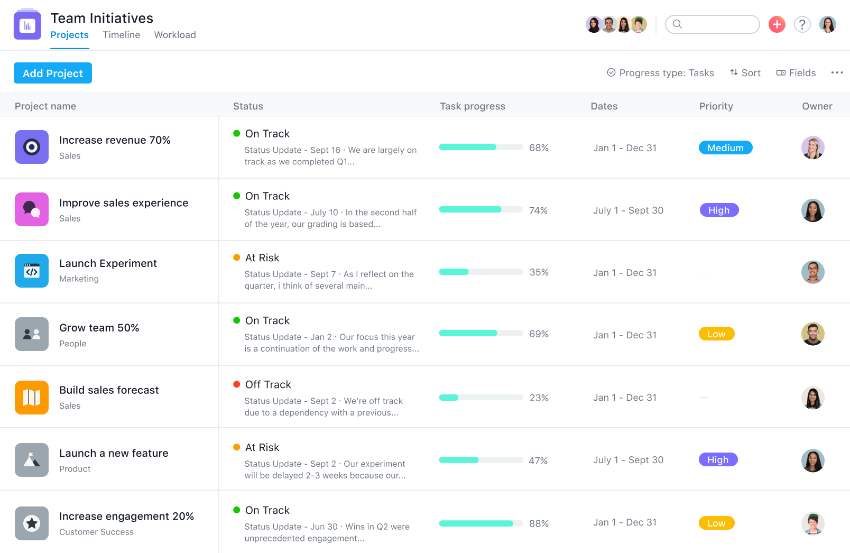
Asana is a popular project management tool that offers a wide range of features to help teams organize, track, and manage work. Asana’s intuitive interface and customizable features make it a versatile tool for different project environments.
Asana allows teams to create and assign tasks, set deadlines, and track project progress. It supports multiple view options, including list, board, and timeline views, catering to different project management styles. Asana also offers robust collaboration features, including team conversations, file sharing, and integration with other tools like Slack, Google Drive, and Outlook.
Despite its extensive features, Asana maintains user-friendliness, making it easy for teams to get started. User feedback also praises Asana for its reliable customer support and continuous product improvements. However, some users note that Asana’s advanced features require a learning curve, and its pricing can be high for small teams.
Tool 2: ClickUp
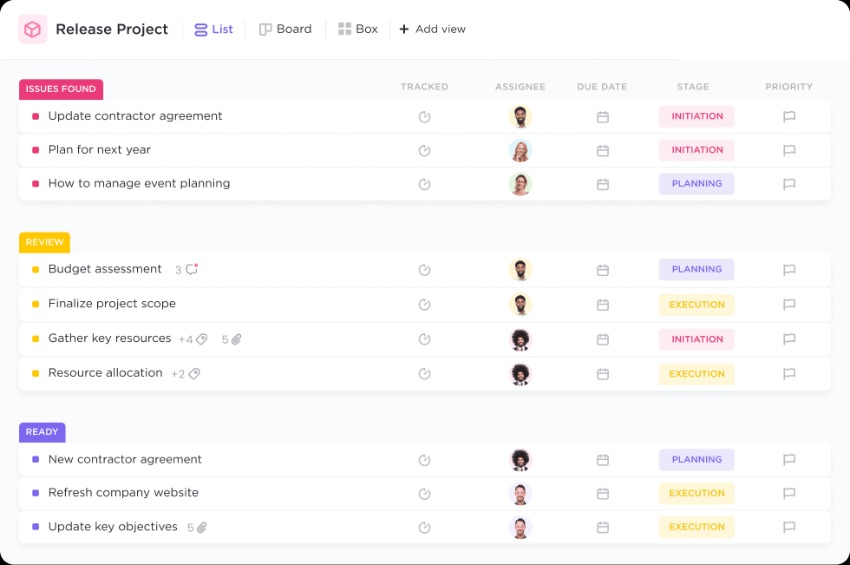
ClickUp is a comprehensive project management tool that promises to “replace all other workplace productivity apps”. ClickUp offers a rich feature set, including task management, time tracking, document sharing, and more, all within a sleek, user-friendly interface.
ClickUp allows teams to customize their workspace to match their workflow. It supports different task views, including list, board, box, and Gantt chart views. With ClickUp, teams can set goals, prioritize tasks, and keep track of project progress. It also offers powerful collaboration features, including commenting, tagging, and real-time editing.
While ClickUp’s comprehensive features make it a powerful tool, they can also make it slightly overwhelming for new users. However, ClickUp offers extensive support resources, including tutorials and webinars, to help users get started. Its competitive pricing makes it an attractive option for teams of all sizes.
Tool 3: Monday.com
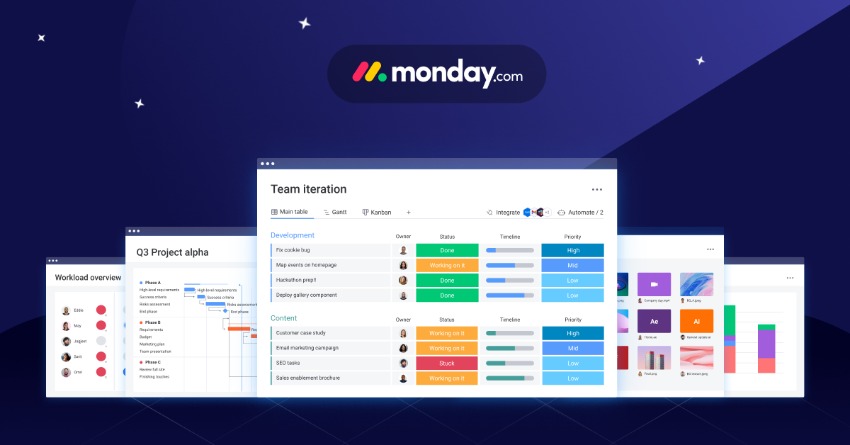
Monday.com is a versatile project management tool that helps teams manage workloads, communicate, and collaborate more efficiently. With its colorful, visual interface, Monday.com turns project management into an engaging, easy-to-understand process.
Monday.com’s features include customizable workflows, automated notifications, and advanced reporting capabilities. It supports a variety of project views, including timeline, kanban, and map views. Monday.com also integrates with popular tools like Google Drive, Slack, and Zoom, further enhancing its functionality.
Monday.com is acclaimed for its ease of use and customization capabilities. Users appreciate its visual approach to project management, which makes it easier to understand complex projects. However, some users note that Monday.com’s pricing can be high for small businesses or startups.
Tool 4: Zoho Projects
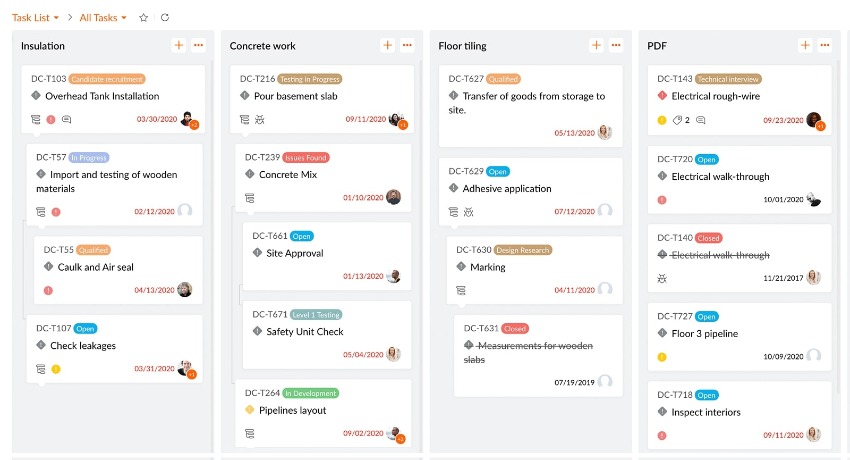
Zoho Projects is a robust project management tool that offers a comprehensive suite of features to help teams plan, track, and collaborate on projects. Zoho Projects is part of Zoho’s extensive suite of business software, making it a good fit for businesses already using Zoho products.
Zoho Projects supports task management, milestone tracking, time logging, and reporting. It offers a variety of task views, including Gantt charts, kanban boards, and custom views. Zoho Projects also supports team collaboration with features like document sharing, forums, and chat.
Users commend Zoho Projects for its extensive features and integrations with other Zoho apps. However, some users find Zoho Projects’ interface less intuitive compared to other tools. Despite this, Zoho Projects’ competitive pricing and extensive capabilities make it a strong contender in the project management tools market.
Tool 5: Jira
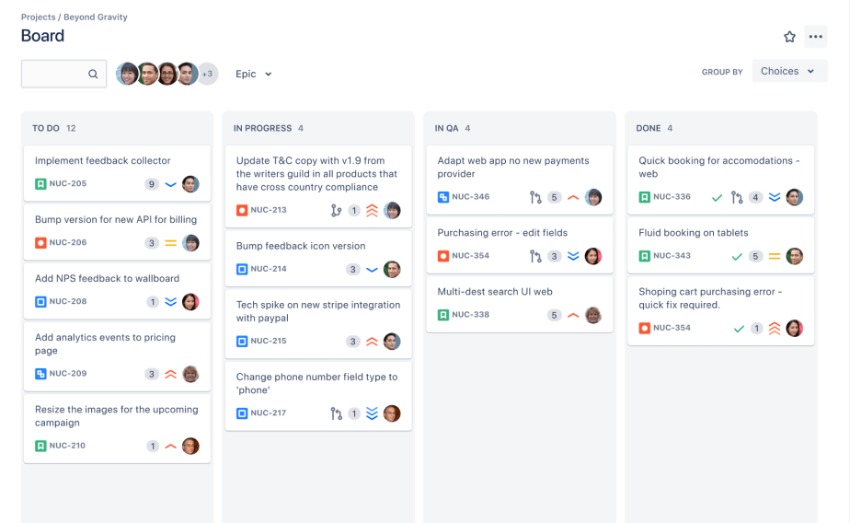
Jira, developed by Atlassian, is a powerful project management tool designed primarily for software development teams. Jira supports Scrum, Kanban, and mixed methodologies, making it a versatile tool for agile teams.
Jira offers features like customizable workflows, bug and issue tracking, and advanced reporting capabilities. It supports different task views, including Scrum boards and Gantt charts. Jira also integrates with other Atlassian products, such as Confluence and Bitbucket, providing a comprehensive solution for software development teams.
While Jira is highly praised for its robust features, it is also noted for its steep learning curve. New users might find Jira complex, but its extensive documentation and community support can help overcome this hurdle. Jira’s pricing is competitive, particularly for large teams, making it a popular choice among software development companies.
In summary, project management techniques and tools are vital for efficient project execution. Techniques like CPM, WBS, Scrum, SAFe, and Kanban provide strategic frameworks for managing tasks, resources, and workflows.
Tools like Asana, ClickUp, Monday.com, Zoho Projects, and Jira offer technological solutions for task management, collaboration, and project tracking. By leveraging these techniques and tools, project managers can enhance their project efficiency, productivity, and success in 2023 and beyond.











